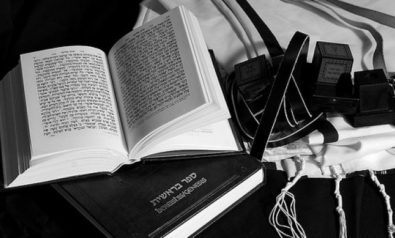Our collective narrative is more and more dominated by fear and instability. Amy Edelstein explores how we need structural changes to reduce the influence of such elements in our collective psyche.
A combination of advanced technology, a 24 hour media cycle, and troubled, alienated youth has splashed the unthinkable too frequently across our minds’ eye. We’re becoming no strangers to eruptions of fear in our youngsters, to shadowy threats in fleeting moments of our common patterns of life. We are not prepared by acts of war nor trained for acts of valor. Oddly, we now live with the unthinkable in neighborhoods where Mr. Rogers used to only button his cardigan, change his shoes, and look for the X the Owl and King Friday XIII. I did in fact grow up in Mr. Rogers actual neighborhood, met his sons at High School parties, and took a Babe Ruth bar from the basket on his front door on Halloween Eves, dutifully obeying the nice sign that said, “Please take one” trying to steal a glimpse through the curtains of the concert harp I heard he played. When I was growing up in a small city, people like him populated my moral code. Be neighborly, be kind, trust adults, there’s no need to fear. My colleague’s school age daughter, in the bucolic country town where I now live, has already learned code words for random attacks, practiced exit drills not from fire smoke but from gunfire. Sometimes I walk through the aisles in the supermarket, a chill runs through me, inadvertently imagining.
The unthinkable is in our cultural psyche. There’s an impulse to find safety, trust, security again. The idea that we could build a fence impermeable enough to prevent random acts of violence from ever touching us is itself as permeable as cheesecloth. Budgets advocated for armed guards at kindergartens – instead of crossing guards with their happy yellow reflector belts chatting with us as we trot across the streets, a kind word for the kids in the out cliques and a stern look to nudge the bullies back into place echoes ludicrous at best and dangerously legitimating a culture of fear at the other extreme.
There are no doubt structural changes that we need to make to restrict access to instruments of violence. There are social support nets we need to erect for the alienated and desensitized among us. But that alone will not help us, the broader us, the more specific individual us, people like you and me, cope with the shadow of fear and imperceptible ripples of insecurity that are now so part of life.
A deeper security in the face of the challenges of life comes from our own inner stability. Its source is our own realization of the very nature of life; our own awakening to the positivity and wholeness that saints, sages, and mystics all ages and all traditions have seen. As we reflect on our world and internalize the shifts that have occurred in our individual and collective psyches in response to senseless acts of violence, as we contemplate how best to secure our future in the deepest sense of the word “secure”, we would do well to advocate the discovery of a profound understanding of the heart of Life. When we root ourselves in an inner stability, in a love for the process of life beyond the vicissitudes of the unfolding of the evolutionary process, when we ground ourselves in that perennial recognition of a unity prior to form and time, we will navigate these objective challenges with courage, compassion, and lightness at the core of our being. To change culture, we must change ourselves; to change ourselves we must change what we rely on for touchstones. A reliable touchstone of self lies deeper than guards at our kindergartens, it lies in that moral fortitude of self. Inner strength for outer stability. The great Nobel Peace Prize recipient and political leader Aung Sang Suu Kyi said it was inner fortitude and contemplation that enabled her to emerge from 23 years of house arrest with her faith in humanity and spirit intact. We would do well to teach and advocate inner stability, to invest our time and attention in cultivating ourselves at the deeper levels of being. It’s more practical and culturally relevant than some of the current debates might have us believe.
The views expressed in this article are the author's own and do not necessarily reflect Fair Observer’s editorial policy.
Support Fair Observer
We rely on your support for our independence, diversity and quality.
For more than 10 years, Fair Observer has been free, fair and independent. No billionaire owns us, no advertisers control us. We are a reader-supported nonprofit. Unlike many other publications, we keep our content free for readers regardless of where they live or whether they can afford to pay. We have no paywalls and no ads.
In the post-truth era of fake news, echo chambers and filter bubbles, we publish a plurality of perspectives from around the world. Anyone can publish with us, but everyone goes through a rigorous editorial process. So, you get fact-checked, well-reasoned content instead of noise.
We publish 2,500+ voices from 90+ countries. We also conduct education and training programs
on subjects ranging from digital media and journalism to writing and critical thinking. This
doesn’t come cheap. Servers, editors, trainers and web developers cost
money.
Please consider supporting us on a regular basis as a recurring donor or a
sustaining member.
Will you support FO’s journalism?
We rely on your support for our independence, diversity and quality.










Comment